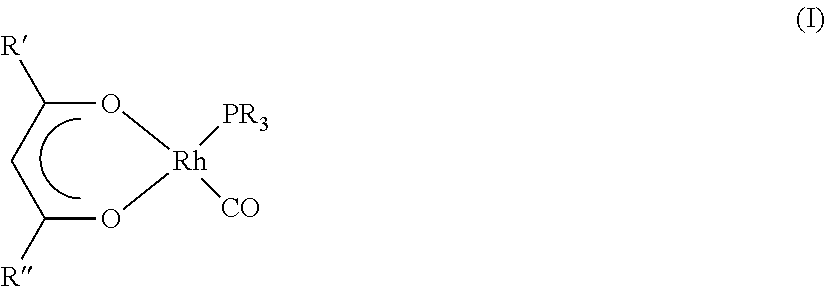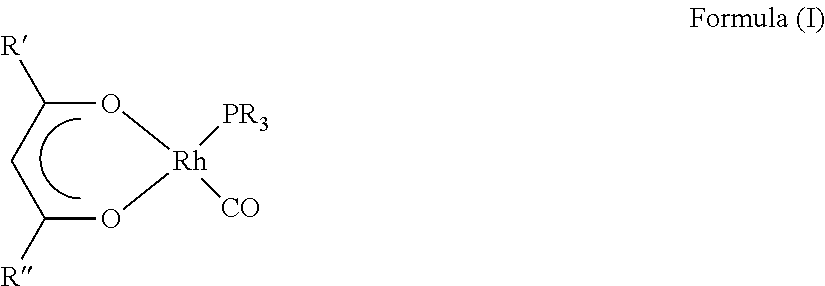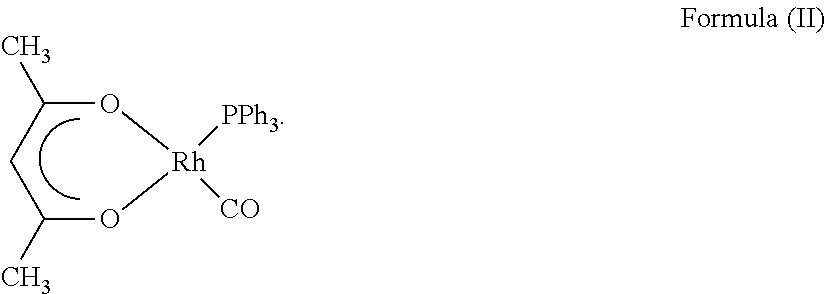Process for preparing diketonato-rhodium(I)-carbonyl complexes
a technology of diketonato-rhodium and complexes, which is applied in the field of process for preparing diketonatorhodium (i)carbonyl complexes, can solve the problem of time-consuming process
- Summary
- Abstract
- Description
- Claims
- Application Information
AI Technical Summary
Benefits of technology
Problems solved by technology
Method used
Image
Examples
example 2
[0073]40.0 g of rhodium (0.39 mol) in the form of 101.9 g of Rh(III) chloride hydrate (Umicore product no. 68.2562.1138, 39.25% Rh content), 437 ml of acetylacetone (4.29 mol) and 431 ml of ethanol (technical grade) are placed in a 1 l double-wall reactor provided with reflux condenser, precision glass stirrer and gas inlet tube. The mixture is treated while stirring with a CO gas stream of 20 l / h and at the same time heated to 60° C. These conditions are maintained for 13 h, and the mixture is subsequently cooled to about 30° C. The CO gas treatment is stopped. 326.5 g of NaHCO3 are subsequently introduced in small portions into the solution over a period of about 30 minutes. This results in liberation of CO2. The mixture is stirred for one hour. 105.0 g (0.4 mol) of triphenylphosphine are subsequently dissolved in 400 ml of toluene and added while stirring vigorously to the reaction mixture over a period of 20 minutes. Immediately afterwards (without an intermediate stirring time)...
PUM
| Property | Measurement | Unit |
|---|---|---|
| temperatures | aaaaa | aaaaa |
| temperature | aaaaa | aaaaa |
| temperatures | aaaaa | aaaaa |
Abstract
Description
Claims
Application Information
 Login to View More
Login to View More - R&D
- Intellectual Property
- Life Sciences
- Materials
- Tech Scout
- Unparalleled Data Quality
- Higher Quality Content
- 60% Fewer Hallucinations
Browse by: Latest US Patents, China's latest patents, Technical Efficacy Thesaurus, Application Domain, Technology Topic, Popular Technical Reports.
© 2025 PatSnap. All rights reserved.Legal|Privacy policy|Modern Slavery Act Transparency Statement|Sitemap|About US| Contact US: help@patsnap.com



